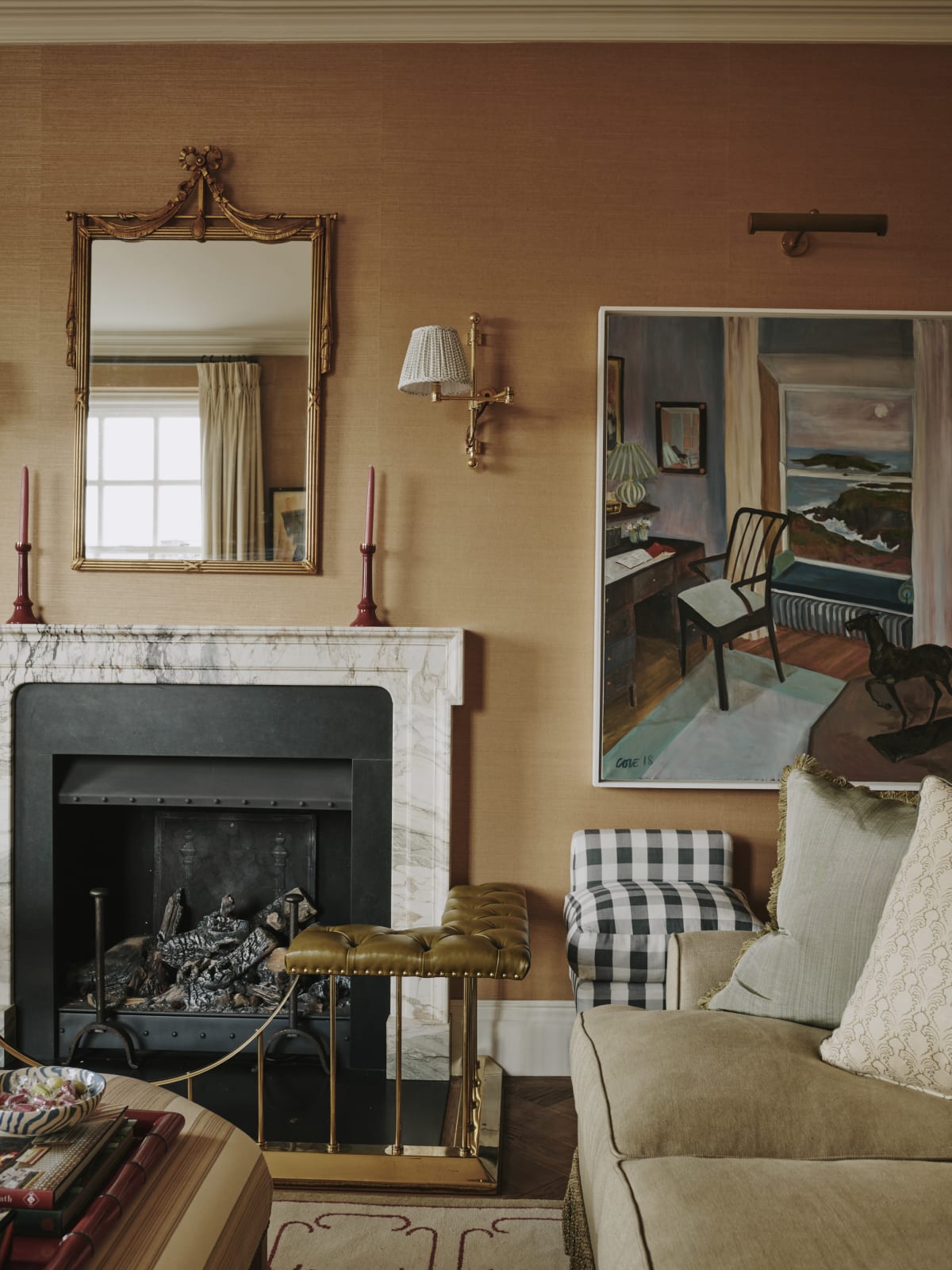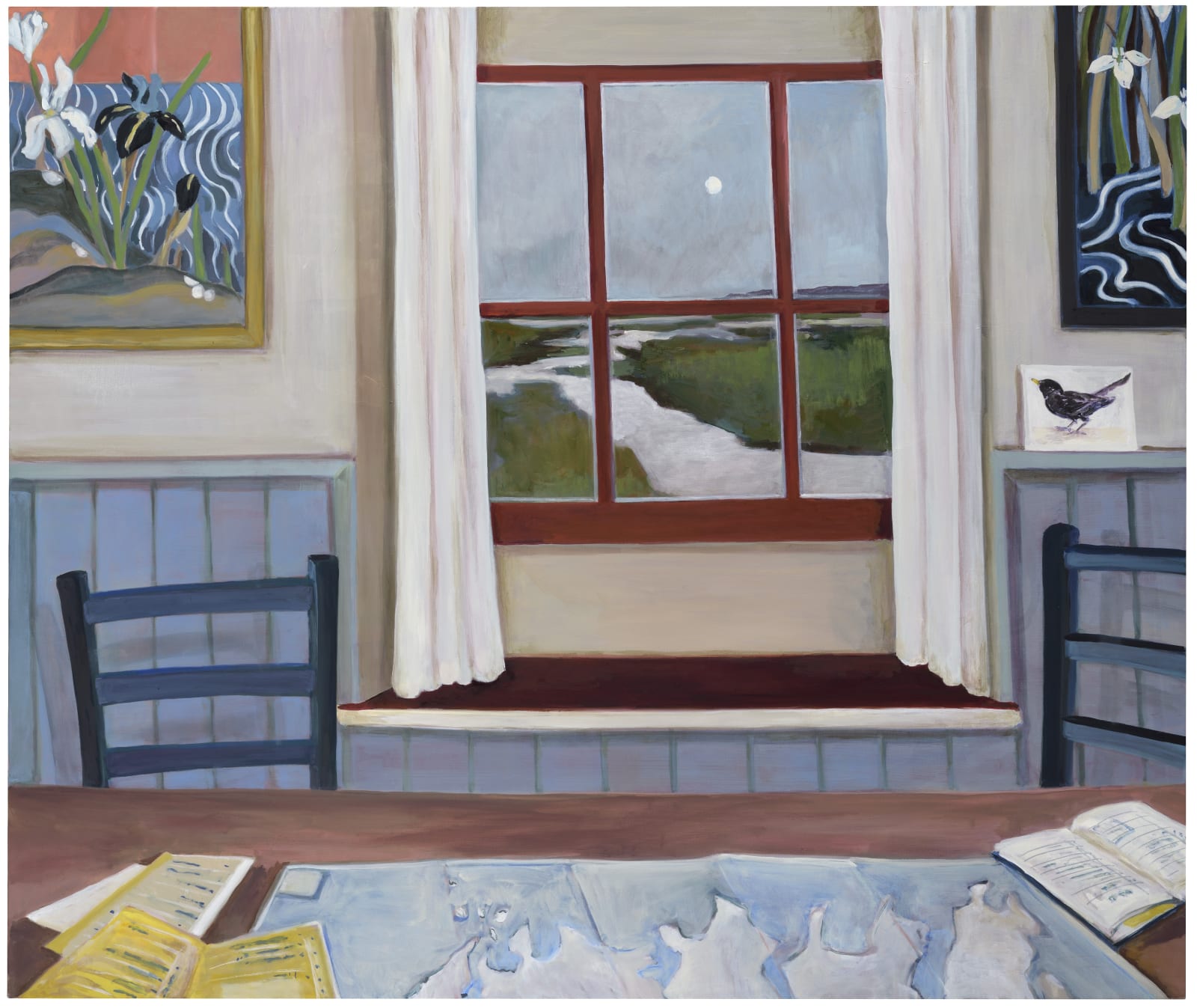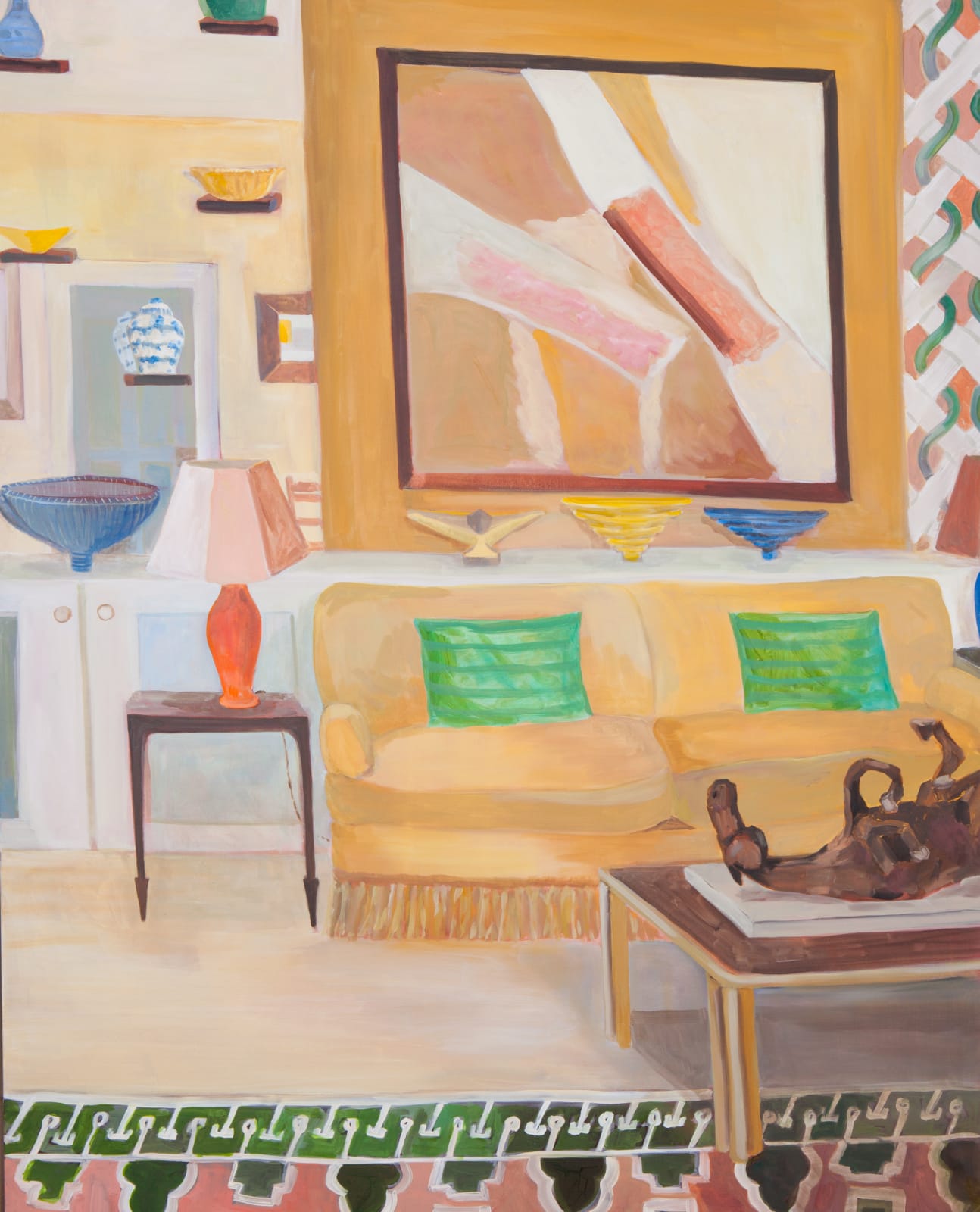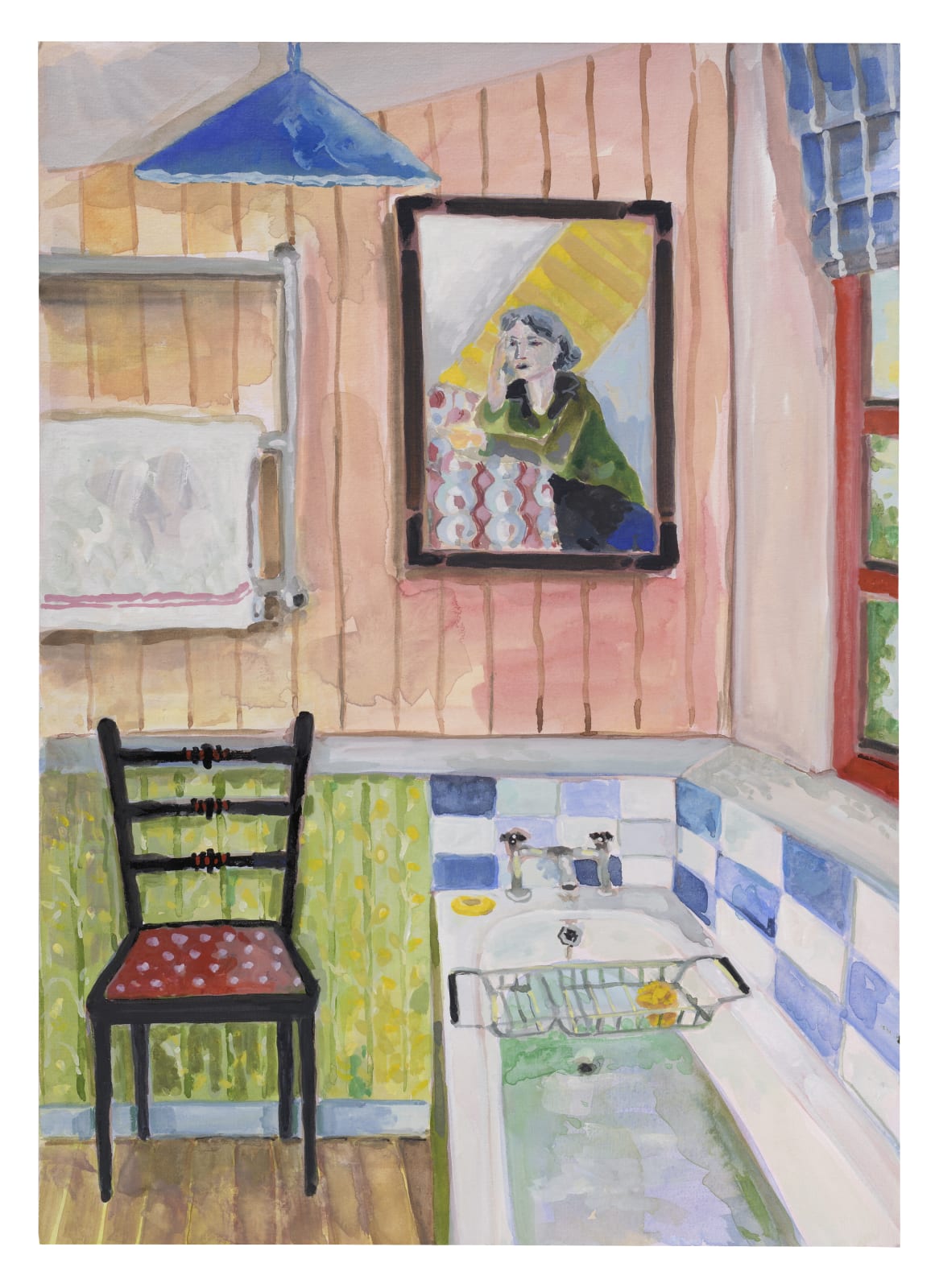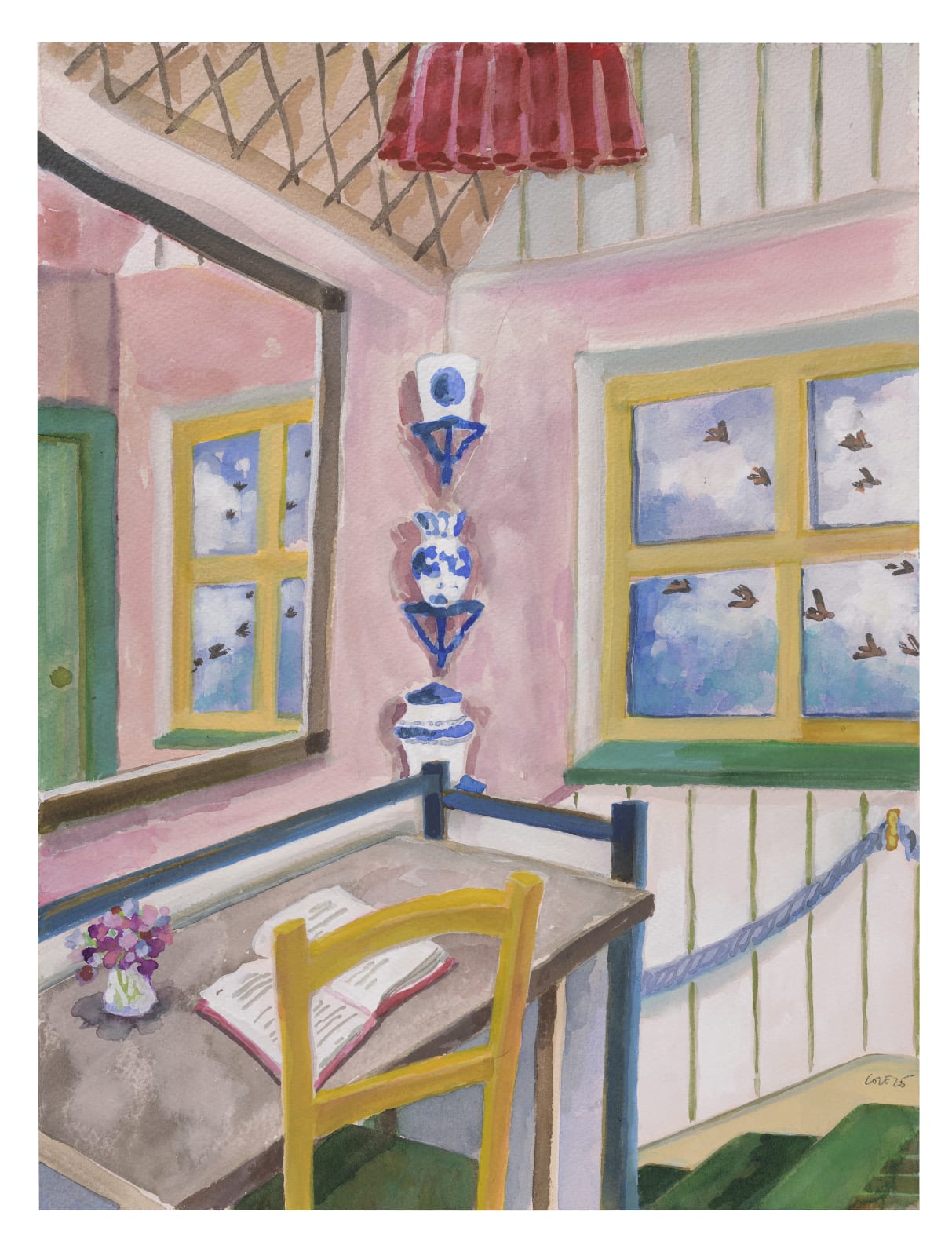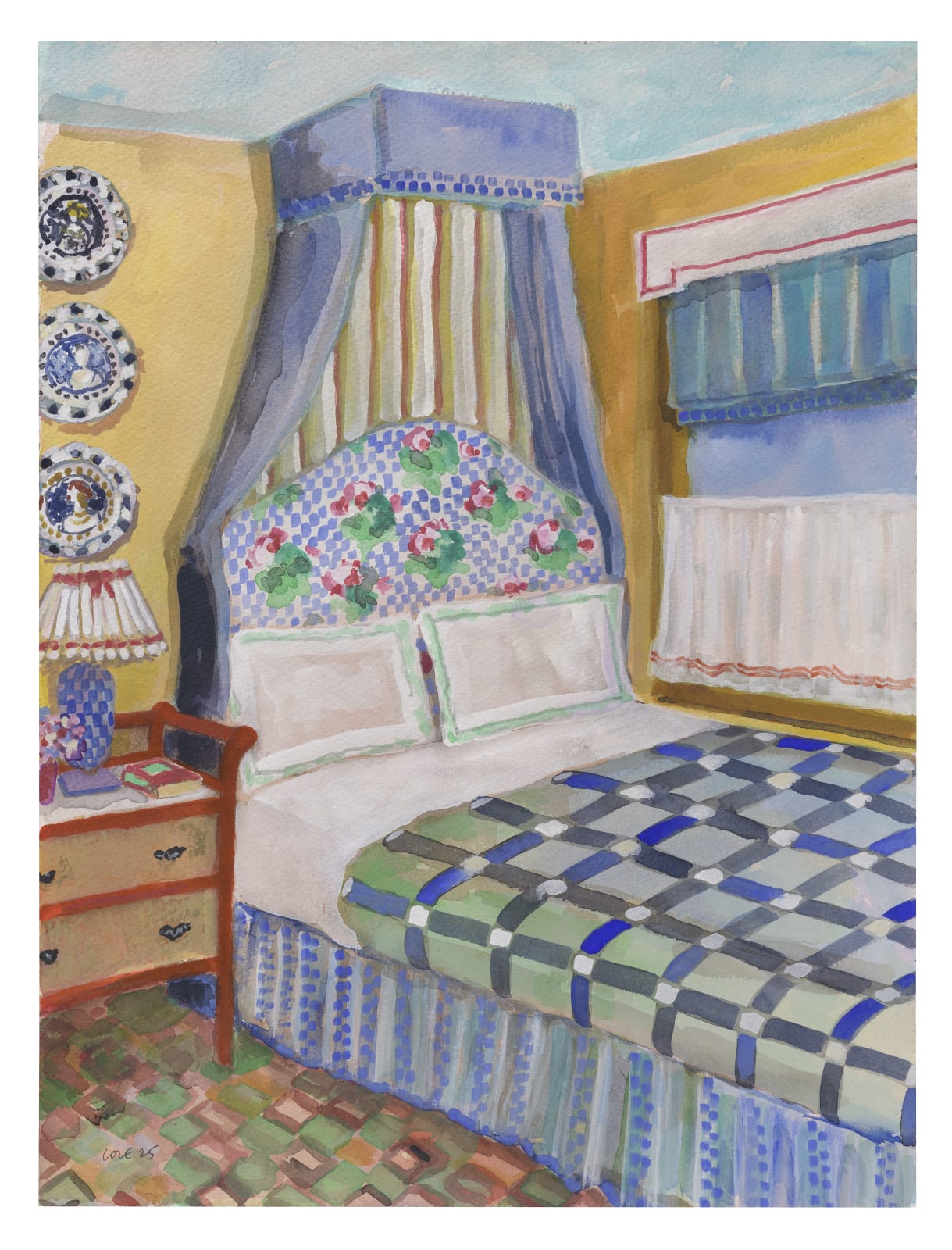Portraits of the Invisible
Lottie Cole’s paintings invite viewers into meticulously constructed interiors that, at first glance, feel warm, inviting, even cozy. But beneath their polished surfaces lies a complex exploration of the veneer of domesticity, class, and the intellectual constructs we associate with "home." Her work captures the quiet tension between what we treasure and what we overlook—the artifacts of our lives that become both symbols of identity and harbingers of time.
For Cole, the home is a container, a structure that holds the past, present, and future all at once. Much like time in a novel, her interiors are layered with narrative—portraits of spaces that transport us to memories of the past while projecting us into imagined futures. These rooms are not real; they are reconstructed, mined from magazines, Instagram posts, and the geography of interiors she reimagines to say what the space cannot articulate on its own.
Her work aligns with a lineage of painters who explore the intimacy and contradictions of interior spaces, evoking the observational power of Caroline Walker or the psychological depth of Mary Cassatt. However, Cole’s approach is uniquely her own. The people in her paintings are conspicuously absent, yet their presence is felt in every carefully placed object.
"Interiors are landscapes," Cole says, "but unlike the blousey vastness of the outdoors, these spaces hold our stories. We exist within them, defined and confined by them." Her works explore visual literacy, asking viewers to piece together meaning from the sum of their parts. The meticulously arranged artifacts—the curtains, carpets, books, and paintings within paintings—become portraits in their own right, standing in for the people who would own or inhabit these spaces.
Cole’s work is deeply rooted in art history. Years spent in galleries and museums inform her practice, weaving historical references into a contemporary context. Her influences range from Eileen Gray’s Parisian interiors to the layered richness of the Bloomsbury Group. Her paintings nod to the past while engaging with contemporary ideas of domesticity and identity, creating a dialogue between eras.
At its core, Cole’s work is about the life contained within walls—and the death that inevitably follows. It is Seamus Heaney’s poetry in visual form, poignant and layered with meaning. Her interiors, while staged, are deeply human, grappling with the fleeting nature of time and the weight of the lives lived within. These are not just pictures of rooms; they are psychological landscapes, emotional narratives, and above all, portraits of the invisible. In Cole’s hands, the home is transformed into something far beyond the sum of its parts: a space where stories are written, lived, and remembered.

